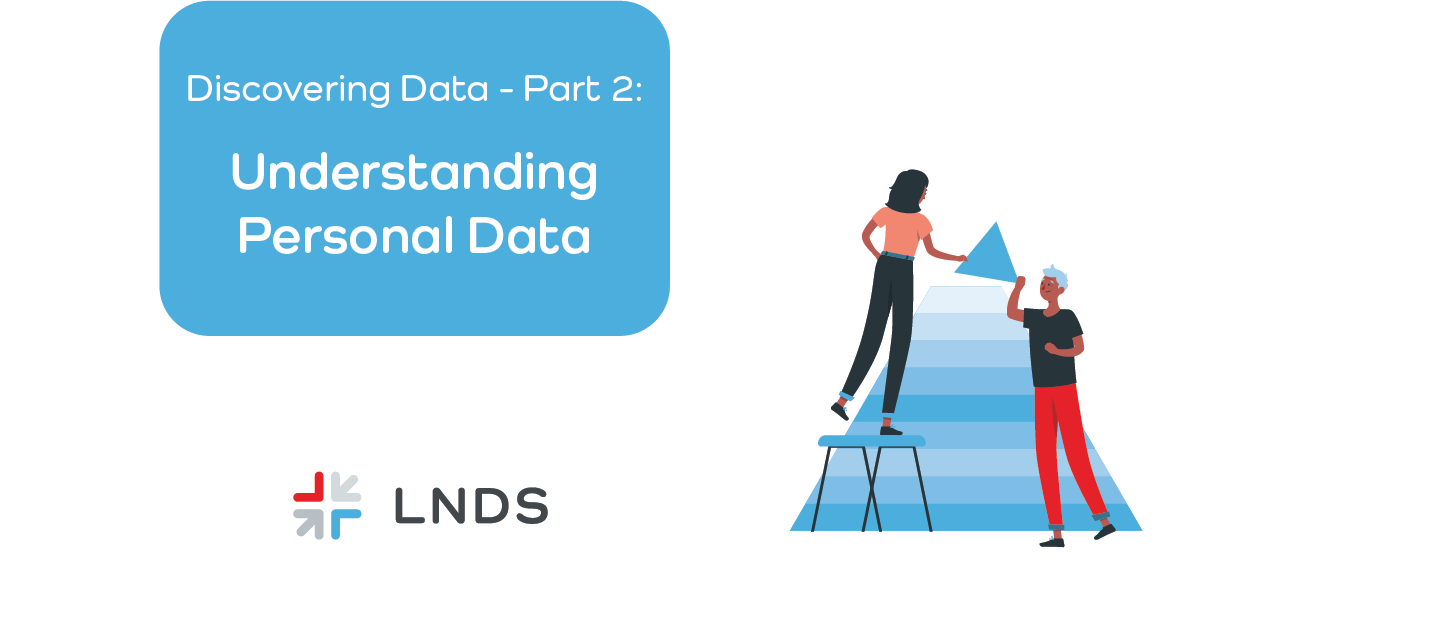
Discovering – Data Part 2: Understand Personal Data
Welcome back to our blog series dedicated to the diverse world of data. In this second part, we will take a deeper dive into the fascinating concept of personal data. Following our introduction to the broader definitions and technical aspects of data (read: Discovering Data Part 1), we now turn our attention to a more specific category that has significant implications in our daily lives and digital interactions.
Read the full blog or watch our short video presented by our CEO, Bert Verdonck, to dive deeper into this interesting topic!
What is Personal Data?
The General Data Protection Regulation (GDPR) defines personal data as a very broad concept. According to the GDPR, “Personal data refers to any information relating to an identified or identifiable natural person.” This can include anything from names, identification numbers, location data, online identifiers, or factors, specific to that person’s physical, physiological, genetic, mental, economic, cultural, or social identity. In principle, we can say that any information that can be directly or indirectly linked to an individual is considered personal data.
This definition is particularly broad and encompasses a wide range of information. It is especially significant in today’s connected world, where individuals can be identified very easily by correlating various pieces of publicly available data.
The Scope of Personal Data
The GDPR emphasises that the protection of personal data does not extend to the data of deceased persons. However, in many countries other regulations may impose restrictions on post-mortem data. Understanding what personal data is, is important to comply with data protection regulations and protect personal privacy.
The importance of Personal Data in the Digital Age
In today’s digital age, the ability to link different types of data to identify individuals poses a major challenge for data protection. The scope of what we consider personal data constantly expands as digital technologies and online services become more widespread. Therefore, it is increasingly important to properly identify and classify data to ensure it is properly handled and protected.
Personal Data vs. Non-Personal Data
An important distinction in data classification is between personal data and non-personal data. As we previously described, personal data includes any information associated with an identifiable individual. Conversely, we refer to non-personal data as all other data that cannot be linked to an individual. Understanding this distinction is essential for applying appropriate legal frameworks and data protection measures. This classification helps determine the level of protection and legal requirements needed for different datasets. It guides decisions on how to process and safeguard your data.
Looking to the future
As we continue to explore the world of data, it is important to recognise the significant impact personal data has on privacy, security, and ethics in the digital age. Understanding the nuances of personal data can help us better navigate the complexities of data protection and make informed decisions about how we handle our data.
Let’s safeguard personal data by understanding its broad implications and ensuring proper classification and protection to uphold privacy in our interconnected world.
In our next blog, we will discuss the important concept of health data. Let’s take this opportunity to explore this special category of personal data. We will define health data according to the GDPR, discuss how it encompasses all data related to the provision of healthcare services, and clarify the distinction between health data and medical data.
Stay tuned for our upcoming posts and be sure to subscribe to our newsletter for the latest updates and insights!


